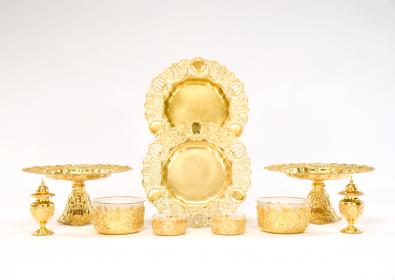
Let then eat cake - or even cupcakes, for that matter - in style.
In the 17th century Europeans used a classic footed serving tray to shuttle wineglasses between kitchens and dining room tables. As entertaining became more elaborate, the tazzas, as they were then called, were stacked on top of one another, forming large tiered pyramids. Soon they held not only glassware but edible treats as well - jellies, sweetmeats, fruit tarts, and sugared nuts. The idea stuck, and thus the dessert plate was born. Made mostly of blown glass until the Victorian times, which brought a taste for elaborate silver, tiered dessert trays and standard domed plates didn't turn up on American tables until the early 1800s. Creating the last course has always been an art in itself, but in an age that has seen the New York City cupcake frenzy and entire restaurants devoted to chocolate, new - and old-dessertware designs are very much in vogue again."Cake plates fell out of favor for a while. They seemed too fussy," says Elise Abrams, whose Great Barrington, Massachusetts, shop specializes in antique dining pieces. Su Sazama, co-owner of Fitzu Society, a contemporary design store in Los Angeles, agrees. "People are entertaining at home more," she says. "Cake stands like those from Design-fenzider add dimension and height to a table." They're the perfect complement to a perfect dessert.
Originally the 19th-century Meissen stand with pierced-rim tazzas and a boy figurine (from Elise Abrams Antiques) was offered with a matching girl counterpart.






